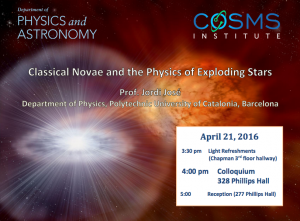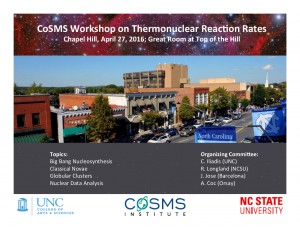Has Kepler Found Aliens?
Prof. John Lattanzio, from the School of Physics and Astronomy at Monash University, Victoria, Australia, will give a colloquium about data from the Kepler spacecraft.
Has Kepler Found Aliens?
Abstract: The Kepler spacecraft has revolutionized the search for exo-planets and provided asteroseismology data for thousands of stars. But it probably gathered more publicity from observations of one single star. This star does not look like anything predicted – with one exception: It looks very much like predictions made for the signature alien megastructures around a star. In this talk I review the Kepler data for this star and look at possible explanations.
A Light refreshments will be served on the 3rd floor of Chapman from 3:30pm.
Colloquium at 4pm in Chapman Hall 125.
A reception will be held at 5pm outside of Chapman Hall 125.



